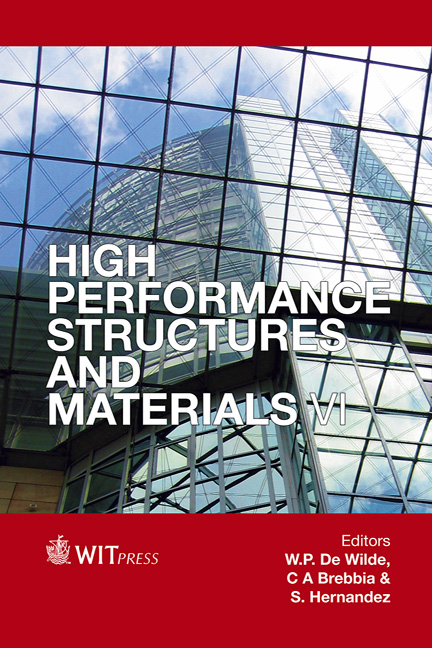Fracture Energy Of Hybrid Polypropylene–steel Fiber High Strength Concrete
Price
Free (open access)
Transaction
Volume
124
Pages
10
Page Range
309 - 318
Published
2012
Size
3961 kb
Paper DOI
10.2495/HPSM120271
Copyright
WIT Press
Author(s)
H. S. J. Al Hazmi, W. H. Al Hazmi, M. A. Shubaili & H. E. M. Sallam
Abstract
Fracture behavior of high strength concrete (HSC) with different types of short fiber (steel, polypropylene (PP), and steel + pp) was investigated in the present work. The fracture behavior of edge-notched beam was determined in three-point bending condition. The crack length to depth ratio, a/d, was equal to 0.2, 0.3, 0.4 and 0.5. The fracture parameters were determined using linear elastic fracture mechanics (LEFM) and the Hillerborg model. The results in the present paper indicated that, adding short fibers to HSC improved its compressive strength in addition to the obvious enhancement in ductility. The mode of failure for various fiber reinforced concrete (FRC) types under compression was varied compared to that of plain concrete. All these cubes failed due to multiple tensile vertical cracks. In general, a small effect of short fibers in improving the indirect tensile strength and flexural strength of HSC. HSC with Steel and PP Hybrid Fiber (SPPFRC) showed superior compressive, tensile, and flexural strengths over the others FRCs. Fracture toughness based on LEFM (KIC) has a limited variation with increasing a/w for HSC and all FRCs. Therefore, the mean value of KIC is calculated and trusted. The predicted values of undamaged defect based on LEFM are comparable to the maximum aggregate size. Therefore, the values of KIC calculated based on LEFM were reasonable. Keywords: high strength concrete, hybrid fiber reinforced concrete, flexural toughness, linear and non-linear fracture mechanics, fracture energy.
Keywords
high strength concrete, hybrid fiber reinforced concrete, flexuraltoughness, linear and non-linear fracture mechanics, fracture energy.





